
Fibers
Scope & Guideline
Unraveling the Science Behind Cutting-edge Materials
Introduction
Aims and Scopes
- Fiber Reinforcement in Construction Materials:
Research into the use of various fiber types, such as carbon, glass, and natural fibers, to enhance the mechanical properties and durability of concrete and other construction materials. - Advanced Fiber Processing Techniques:
Innovations in fiber production methods, including electrospinning, blow spinning, and 3D printing of fiber-reinforced materials, aimed at improving the functionality and performance of fibers. - Sustainable and Eco-Friendly Fibers:
Exploration of biodegradable and sustainable fibers, particularly those derived from natural sources, and their applications in reducing environmental impact. - Nanofibers and Their Applications:
Focus on the fabrication and application of nanofibers in diverse fields such as drug delivery systems, filtration, and advanced composites. - Fiber Characterization and Modeling:
Studies on the mechanical, thermal, and structural characterization of various fiber types and the application of computational models to predict their behavior in different environments.
Trending and Emerging
- Smart and Functional Fibers:
Research on fibers that incorporate smart technologies, such as sensors and conductive materials, is on the rise, driven by demand in wearable technology and smart textiles. - Recycling and Upcycling of Fibers:
An increasing number of studies focus on the recycling and upcycling of waste fibers and materials, highlighting sustainability in fiber production and usage. - Bio-Based and Biodegradable Fibers:
There is a growing interest in developing bio-based fibers and biodegradable composites, reflecting a broader industry trend towards sustainability and environmental responsibility. - Nanotechnology in Fiber Development:
The application of nanotechnology in fiber development, including the integration of nanomaterials to enhance fiber characteristics, is becoming a prominent theme in recent research. - Hybrid Fiber Composites:
The exploration of hybrid composites that combine different types of fibers to optimize mechanical properties and performance is gaining traction in the literature.
Declining or Waning
- Traditional Textile Applications:
Research focused solely on conventional textile applications is decreasing as more emphasis is placed on functional and technical textiles that offer enhanced properties. - Non-Eco-Friendly Fiber Processing Methods:
There is a noticeable decline in studies that promote traditional, non-sustainable fiber processing methods, as the industry shifts towards greener technologies. - Basic Fiber Properties without Advanced Applications:
Papers that discuss basic mechanical properties of fibers without linking them to advanced applications or innovative uses are becoming less common.
Similar Journals

Advances in Civil Engineering Materials
Unveiling the Next Generation of Construction MaterialsAdvances in Civil Engineering Materials, published by the American Society for Testing and Materials, is a leading journal in the field of civil engineering, specializing in the innovative applications and developments of materials used in construction and infrastructure. With an ISSN of 2379-1357 and an impressive lineup of contributions from renowned researchers, this journal serves as a pivotal platform for disseminating groundbreaking research from 2012 to 2024, currently enjoying a category quartile ranking of Q2 across multiple disciplines including Ceramics and Composites, Civil and Structural Engineering, and Materials Chemistry. Though it operates under a subscription model, the valuable insights and advancements presented in the journal have a significant impact on both academia and industry practices. Researchers, professionals, and students are invited to explore the evolving landscape of civil engineering materials, gaining critical knowledge to drive innovations and contribute to the sustainability and safety of architectural endeavors.
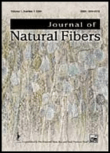
Journal of Natural Fibers
Exploring the Sustainable Future of Natural FibersJournal of Natural Fibers is a pioneering open-access academic journal, published by Taylor & Francis Inc, that focuses on the emerging and multidisciplinary field of natural fibers. Established in 2004, the journal aims to advance the understanding and application of natural fibers in various industries, including materials science, textiles, and biocomposites. With an impressive impact factor and ranking in the 74th percentile among materials science journals, it is classified as Q2 in materials science (miscellaneous) as of 2023. The journal encourages innovative research and provides a platform for scientists, researchers, and professionals to share their findings in a rapidly evolving field. Notably, since 2023, it has embraced an open-access model, enhancing the accessibility of cutting-edge research to a broader audience. With contributions from a diverse range of countries and a commitment to high-quality peer review, the Journal of Natural Fibers is essential for those looking to explore the sustainable potentials and technological advancements of natural fibers.

Journal of Fiber Science and Technology
Unraveling the Potential of Fiber ResearchJournal of Fiber Science and Technology is a pivotal scholarly publication dedicated to advancing the field of fiber science, encompassing the study of fibers and textiles across various applications. Published by SOC FIBER SCIENCE TECHNOLOGY in Japan, this journal has been a significant forum for innovative research since its inception, with coverage from as early as 1946. Despite its current categorization in the Q4 quartile across multiple disciplines including Chemical Engineering, Industrial and Manufacturing Engineering, and Materials Science, the journal provides a valuable platform for the dissemination of knowledge, fostering collaboration among researchers, professionals, and students alike. The journal promotes an interactive learning environment, welcoming contributions that underscore the latest advancements in fiber materials, processing technologies, and their broad industrial implications. By bridging theory and practical application, the Journal of Fiber Science and Technology is essential in shaping the future of fiber technology.
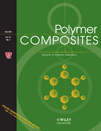
POLYMER COMPOSITES
Championing Excellence in Polymer CompositesPOLYMER COMPOSITES, published by WILEY, is a leading journal dedicated to advancing the fields of materials science and engineering through the exploration of polymer composite materials. With its foundation dating back to 1980, this esteemed journal has continuously provided a platform for researchers to publish high-quality studies and innovative methodologies in areas such as ceramics, composites, and miscellaneous chemistry. Ranked in the prestigious Q1 quartile for sectors like Polymers and Plastics as well as Materials Chemistry, POLYMER COMPOSITES stands significant within the academic community, holding a notable impact factor that reflects its influence. The journal encompasses a comprehensive range of topics, making it essential reading for professionals, researchers, and students aiming to stay at the forefront of developments in polymer science and composite technologies. Although it does not currently offer Open Access, readers can access its impactful publications through institutional or individual subscriptions, contributing to ongoing advancements in the field and facilitating the exchange of valuable knowledge among scientists and engineers worldwide.
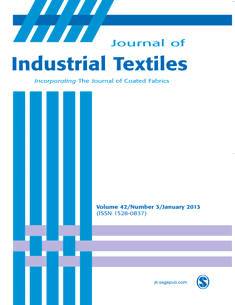
Journal of Industrial Textiles
Innovating the Fabric of IndustryJournal of Industrial Textiles, published by SAGE Publications Inc, is a leading academic journal that focuses on the intricate interplay between textile materials and industrial applications. With a significant impact factor and a strong reputation in the field, it caters to a diverse audience ranging from researchers and professionals to students interested in the advancement of textile engineering, chemical engineering, and materials science. The journal offers invaluable insights into innovative textile processes, sustainable practices, and the latest technological developments as it spans research contributions from 1971 to the present. Notably, it ranks in the second quartile across various categories, including Chemical Engineering and Industrial and Manufacturing Engineering, reflecting its influence and quality in the scientific community. Although it is not an open access journal, the Journal of Industrial Textiles remains a critical resource for advancing knowledge and fostering collaboration within the textile sector and related fields.
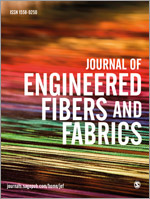
Journal of Engineered Fibers and Fabrics
Transforming the Fabric of Material Science.The Journal of Engineered Fibers and Fabrics, published by SAGE Publications Ltd, serves as a leading platform in the field of Materials Science, providing vital insights and innovations in engineered fibers and textile technology. Established in 2009, this Open Access journal has been at the forefront of disseminating research aimed at advancing the science and application of fibrous materials, with the potential to impact industries such as fashion, automotive, and healthcare. With an impressive Q2 ranking in the 2023 Materials Science category and a solid percentile standing of 59th in general materials science rankings on Scopus, the journal is recognized for its rigorous peer-reviewed content. It addresses the latest developments and challenges in fabric engineering, enabling researchers, professionals, and students to stay abreast of pioneering discoveries and practical applications. To further enhance accessibility and encourage collaboration, the journal has been fully open-access since 2019, allowing a broader audience to benefit from its published research. The journal's commitment to advancing knowledge in this niche area makes it an invaluable resource for those involved in materials research and applications.
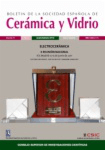
BOLETIN DE LA SOCIEDAD ESPANOLA DE CERAMICA Y VIDRIO
Catalyzing Knowledge Exchange in Ceramics and GlassBOLETIN DE LA SOCIEDAD ESPANOLA DE CERAMICA Y VIDRIO, published by Elsevier, is a premier open-access journal dedicated to advancing research in the fields of Ceramics and Composites, Industrial and Manufacturing Engineering, and Mechanics of Materials. With an impressive impact factor and a strong ranking within its categories—Q2 in 2023 for multiple engineering domains—it serves as a vital resource for academics, industry professionals, and students alike. The journal has embraced an open-access model since 2015, providing widespread accessibility to the latest findings and innovations in ceramic and glass sciences, thus encouraging collaboration and knowledge sharing within the global research community. Published quarterly, and with a focus on interdisciplinary applications, the BOLETIN DE LA SOCIEDAD ESPANOLA DE CERAMICA Y VIDRIO is not only influential in shaping research agendas but also essential for anyone engaged in the evolving landscape of materials science.

COMPOSITE STRUCTURES
Shaping the Landscape of Composite Engineering ExcellenceComposite Structures, published by Elsevier Science Ltd, is a premier academic journal that has been at the forefront of research in the fields of Ceramics and Composites and Civil and Structural Engineering since its inception in 1983. With a remarkable Q1 ranking in both categories for 2023, it is recognized as one of the leading publications, occupying the 22nd position in Civil and Structural Engineering and the 14th in Materials Science, showcasing its high-impact contributions to the respective fields. The journal serves as a crucial platform for disseminating cutting-edge research, innovative methodologies, and comprehensive reviews that cater to the academic and professional community. Although it does not offer open access options, its robust impact factor and extensive reach through Scopus ensure that the articles published are widely cited and serve as valuable resources for enhancing the understanding of composite materials and structures. The journal invites contributions that push the boundaries of knowledge, making it an essential read for researchers, engineers, and students invested in advanced materials and structural applications.
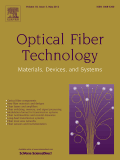
OPTICAL FIBER TECHNOLOGY
Innovating the Future of Light and ConnectivityOPTICAL FIBER TECHNOLOGY is a premier journal in the fields of atomic and molecular physics, optics, control and systems engineering, as well as electrical and electronic engineering, published by ELSEVIER SCIENCE INC. With an ISSN of 1068-5200 and E-ISSN 1095-9912, it offers a platform for disseminating cutting-edge research and developments in optical fiber technology and its applications. The journal has achieved a notable impact, ranking in the second quartile for multiple categories in 2023, including control and systems engineering and electronic, optical, and magnetic materials. By providing a robust avenue for peer-reviewed articles, OPTICAL FIBER TECHNOLOGY caters to a diverse audience of researchers, professionals, and students dedicated to advancing knowledge and innovation in optics and related fields. This respected journal is particularly suited for those seeking to stay updated on the latest technological advancements and research trends, ensuring its relevance in both academic and industrial contexts.
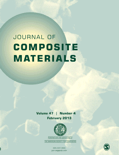
JOURNAL OF COMPOSITE MATERIALS
Driving Excellence in Composite Materials ResearchJOURNAL OF COMPOSITE MATERIALS, published by SAGE PUBLICATIONS LTD, is a premier academic journal dedicated to advancing the field of composite materials. With a long-standing history since 1967, this journal serves as a vital platform for researchers and professionals in the areas of ceramics and composites, materials chemistry, mechanical engineering, and mechanics of materials. The journal's impact is further underscored by its Q2 quartile ranking in various categories as of 2023, alongside notable Scopus rankings in multiple engineering and material science disciplines. Though it currently lacks Open Access options, its rigorous peer-review process ensures the high quality and relevance of its published research. This journal is instrumental in fostering innovation and promoting collaboration among academics and industry professionals, making it essential reading for anyone involved in materials science and engineering.